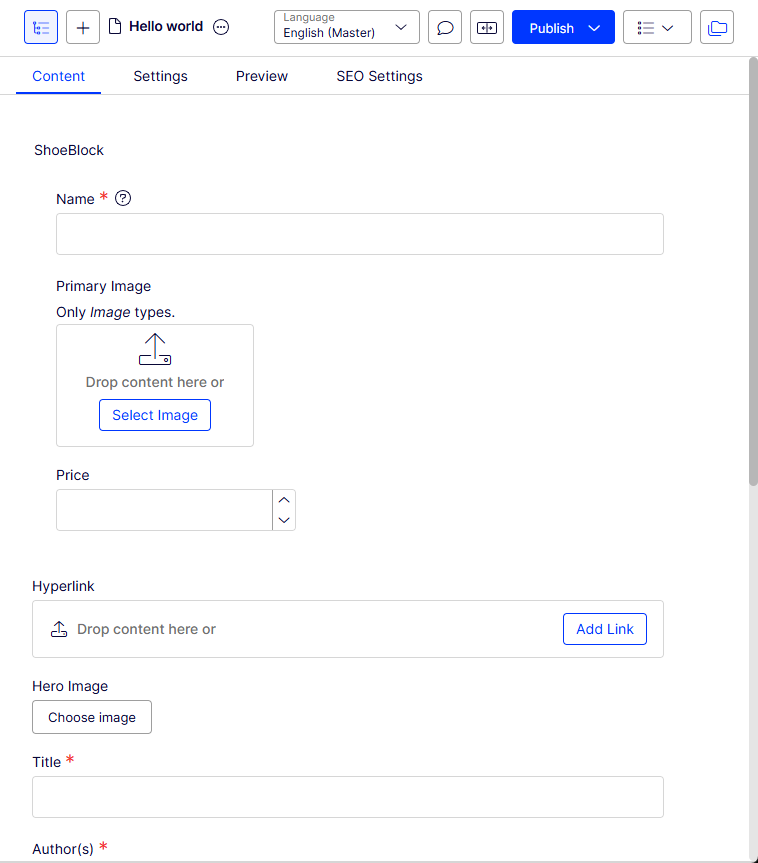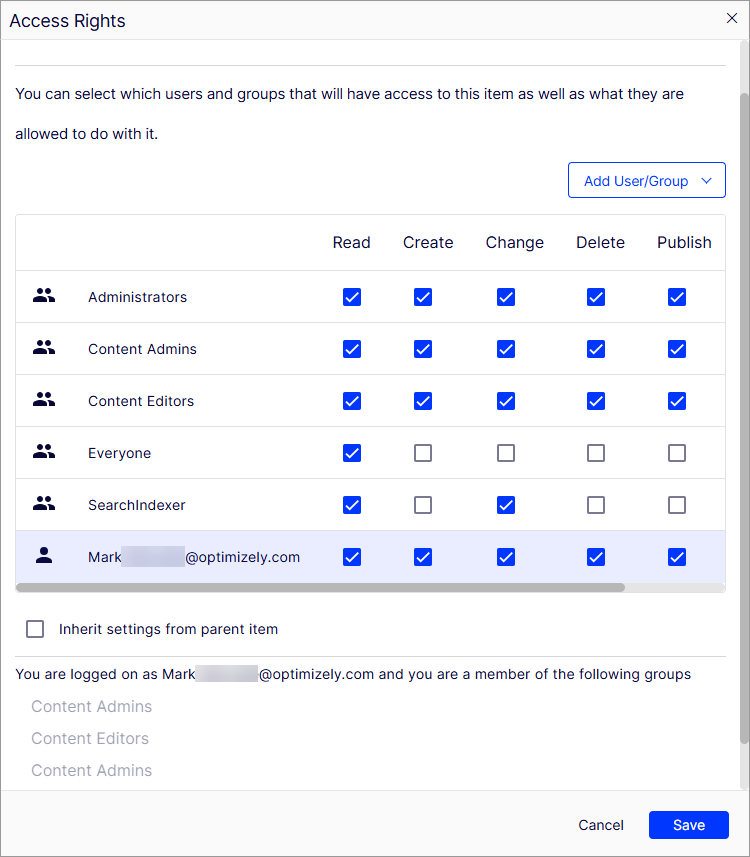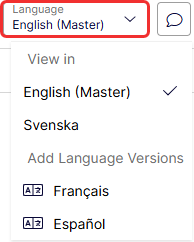All Properties editing view
Information on the All Properties editing view in Optimizely CMS (SaaS).
The All Properties editing view provides access to content properties, including those not available in the Visual Builder. Select All Properties in the toolbar to access these additional properties. This view is particularly useful for content editors who need to manage complex pages with multiple elements or for developers who are setting up templates and need to ensure all properties are correctly configured.
Settings tab
The Settings tab is default and contains built-in properties for managing publication dates, sort order, and shortcuts.

- Name in URL – The URL is automatically created based on the page's name and its place in the navigation. It depends on the implementation whether this is visible in links on the application. If you copy a page, the URL of the original page is copied with a number added to it. Change this if you create content based on existing page copies. Changing the URL for an existing page may cause broken links.
- Simple address – This unique URL can be added to frequently requested pages on your application, letting visitors locate the page by typing the simple address name directly after the main URL of the application. Providing, for example, products as a simple address lets you find the page just by entering the URL (for example,
https://www.company.com/products) in the address bar of the browser, even if the Products page is located further down in the navigation tree. You can use the Reports to manage simple addresses for your application. - Content Type – Click the link to edit the properties of the content type.
- Content ID – Shows the unique ID set by the system and the type of content on which the content is based. (link to admin mode on that content type)
- Published, Created, and Modified – System-generated timestamps for the content that rarely need to be changed.
- Update modified date – Select this checkbox if you make significant changes to the content and want the system to update the modification date. For example, you can publish a fix to a typographical error without updating the modified date because it was a simple correction (and too trivial for notification). However, if you change the content (that could be months old) in an important way, select Update modified date to show the date the content was updated at the bottom of the page to let readers know how recently the information was updated. Perhaps you can also write a job to get pages that were modified since a specified time period to see any changed pages.
SEO Settings tab
Add keywords for search engine optimization (SEO).

From the administrative interface, you can customize and configure default values for selected properties or make certain properties mandatory for editors to fill in. See Define page properties.
Content tab
Available for some types of content, the Content tab lets you manage and edit the various content elements of a page or block. This tab provides an overview of available content properties where you can make changes directly.

Preview tab
Available for some types of content, the Preview tab manages content elements, like the Content tab, but for previews.

Moved functionality
Properties functionality previously existed the former All Properties view interface. This section shows where it exists now.

-
Edit name – You can edit the name directly with double-click or Edit name.

Moved to Settings tab
- Name in URL
- Simple address
- ID, Type – Now Content type.
Moved to Publish button

-
Access Rights (formerly Visible to) – Indicates if public access to the content is restricted.

-
Manage Expiration
-
Permanently Mark as Being Edited
-
Languages – Moved to Language selector. If your application has content in multiple languages, some properties may be locked for editing in a specific language. These properties are globally shared; you can edit them only in the master language. See Translate content into other languages.

Updated 16 days ago